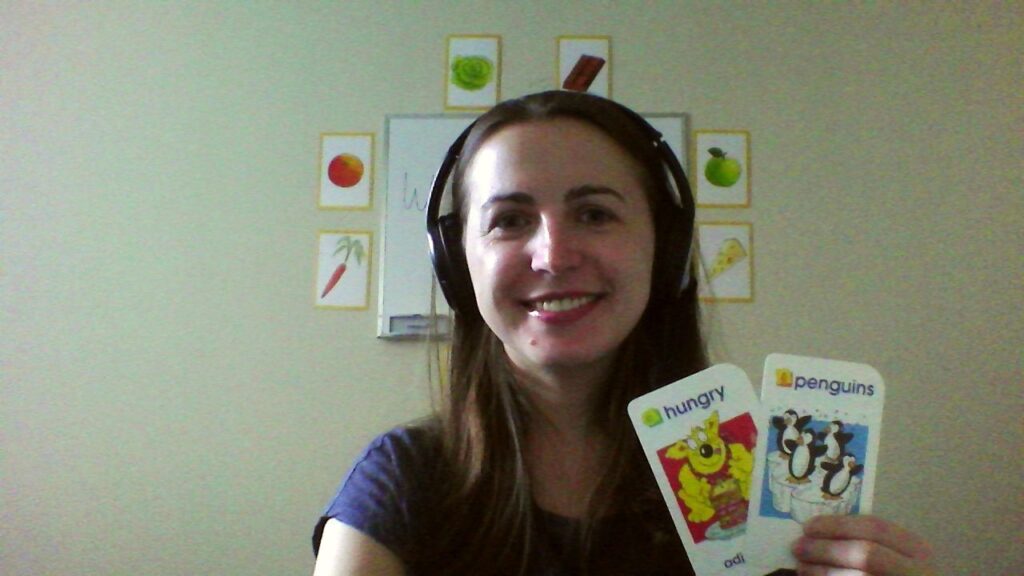Parents walking around in the background, dogs barking, students running in and out of the room… when it comes to dealing with challenging students when teaching English online, you need to be prepared! Being an online English teacher can be difficult at times but also quite rewarding. By simply planning ahead, being flexible, and having a good sense of humor, you can handle these so-called challenging or difficult students and come out with stronger classroom management skills!
If you’re new to teaching, you’ll want to get initial training and qualification with a TEFL certificate. You can explore our online TEFL courses to get started!
What makes a student challenging?
Any number of things can create challenging TEFL/TESOL students in the classroom, whether it’s a physical classroom setting or a virtual one. Students may be bored, young learners might have short attention spans, teens could be trying to impress their peers, or adult students might not feel confident in their English speaking abilities.
In any situation, when it comes to dealing with difficult students when teaching English online or in the physical classroom, the important thing to remember is that just because a student is acting out doesn’t mean they’re a bad student. Whether they just need a bit more attention or a place to direct their energy or enthusiasm, these students can be managed, and they deserve the same amount of effort and respect you’d give any other student.
Fully prepare for any challenge as an online ESL teacher with targeted training: Bridge Specialized Certification in Teaching English Online.
How are the challenges different when teaching English online?
Teaching English online presents its own set of unique challenges. First and foremost, delivering lessons in a virtual classroom means that students are often learning from home and, therefore, may be learning among a host of distractions. These can come in the form of other family members, household chores, ringing telephones, pets acting up, and everything else that comes with a student’s daily home life.
Additionally, a number of time-consuming and sometimes frustrating hiccups occur from time to time whenever you’re relying on technology. Whether it’s a student’s bad connection or broken microphone or your pupils simply not understanding how the class platform works, you should prepare for technological difficulties in the online classroom.
Read about the pros and cons of teaching English online.
What are some common types of difficult students when teaching online and how can I handle them?
1. The 2-for-1 Student
Often through no fault of their own, these students never come to class alone. Instead, they may have family members (oftentimes parents) either watching the class from the background or else conducting their own business in view of the camera (business that can also be heard whenever a student unmutes their mic). Whether it’s the overzealous parent who wants to see what their child is learning, a spouse making dinner, or an uninhibited sibling doing cartwheels in the living room, having family members in the background can be a distraction for both you and your students.
How to handle this student:
I often feel bad for these students because they’re usually trying hard to focus on the lesson. When it comes to eager parents, I recommend just letting it go if they’re silently watching your class. However, when the parents start getting involved (e.g., answering questions, making their child nervous, etc.), I tend to politely say things like “Let’s just hear from Jonathan this time.” Usually, the parent gets the hint that you’d like them to stop intervening. If that doesn’t work, contact the company or school that you’re teaching for and bring up the issue.
For adult students or students of any age who have distracting family members in the background (people who aren’t interested in the lesson but who are merely doing other things behind the student), you can always request that the student move to a quieter location.
If that’s not possible, and you’re teaching multiple students, make use of your teaching platform and turn the student’s camera off and mute their mic whenever they’re not participating/speaking so as not to distract the rest of the class. Just be sure not to leave them out, as they should still have opportunities to answer questions, play games, etc.
And, if they’re the only student in the class, you can just do your best to ignore what’s going on in the background. You can even incorporate the chaos into your lesson. For example, start a discussion in English by asking questions like “What is your mom cooking behind you?”
2. The Houdini
This student is famous for their disappearing act and is always escaping from class only to reappear ever so often. This elusive student may come in the form of a young learner who’s playing peekaboo with the camera by popping in and out of view or else the adult learner who’s running in and out of the room in order to tend to other chores, etc. As a teacher, you may find yourself staring at an empty bedroom or office for the majority of the class.
How to handle this student:
When it comes to adult students who are busy with other things during class, try not to take it personally. Sometimes, it’s not easy to fit in an English lesson, and if you’re still working out how to teach English online from home, then you can probably relate to how difficult it can be to sit at your computer and stay focused while that pile of laundry is staring at you from the corner of the room or that stack of bills on your desk is just asking to be paid.
Instead of assuming the student isn’t paying attention, try making the class more interactive by getting students to participate and offering lots of student talk time. Even if your student isn’t on-camera, they may very well be paying attention just around the corner.
For the young learner who’s popping in and out of view and playing games with you, one of the best strategies you can do is to require a lot of on-screen participation. Whether that’s playing games where the student needs to see you, holding up interesting objects (related to the lesson) to your camera, or having the student write English words on the virtual whiteboard, capturing the student’s attention is essential to keeping them in their seat. And occasionally, don’t be afraid to embrace scavenger hunts or other physical games (like Simon Says) to help young students get their energy out while still practicing English.
Get more ideas for low-prep games for teaching English online.
3. The On-the-Go Learner
This difficult student attempts to take class with them, whether it’s to the store, a restaurant, or in the car. Between phones and tablets, the digital era offers plenty of ways for the busy learner to bring class with them wherever they go. Unfortunately, this can mean a distracted student, plenty of background noise, and an unstable Internet connection.
How to handle this student:
Stick to your company/school’s policy. Most online teaching companies or schools have student policies in place that include requirements such as a quiet background and stable Internet connection. If your student is continually trying to take class with them while they do other things and have a lot of background noise, use the support online English tutoring companies provide, and report the problem.
In the meantime, do your best to conduct class as normal. Remember that while it may appear that your student isn’t setting aside time for class or prioritizing your lesson, it may be the opposite. They may be so dedicated to learning English that they’re willing to work on a lesson whenever and wherever they can, so try not to get frustrated with these students.
4. The Cameraman
These students are nearly always young learners (and sometimes even teens) who find it exciting to use a webcam and who get distracted by bringing either themselves or objects close to and then far away from the camera. Other pastimes for the Cameraman student include covering and uncovering the camera and, my personal favorite, moving around with their laptop/tablet/phone in order to shoot a home movie of sorts by taking you on a tour of their room or house.
How to handle this student:
If you’ve got a young student who’s interested in their camera, try to embrace their enthusiasm by getting them to present relevant objects to the class. Incorporate realia into the lesson, have them demonstrate adjectives like “near” and “far,” or have them describe the room they’re showing you in English to practice house vocabulary. You can always find a way to incorporate what’s around them into the lesson.
5. The Technologically Distracting Student
Another one of the challenging online student types, this student is either a bit too enthusiastic with technology—think adding funny images and gifs around themselves in their camera feed or getting a bit too crazy with virtual whiteboard pens—or else has a difficult time understanding how technology works.
The technology enthusiast can be difficult to deal with because they’re not only distracted themselves but can also be a distraction to other students in the classroom as well. On the other hand, the student who just can’t seem to make their mic work or connect to the class platform tends to take up a good bit of class time asking for your help to set things up. They may also get frustrated and/or not be able to participate due to technological issues.
How to handle this student:
If you have more than one student, and there’s someone who’s using technology inappropriately or overzealously and they won’t stop when you ask them to, you can fight fire with fire, or in this case technology with technology, by taking advantage of your online class platform. Most will give you the ability to mute students, block their virtual pens, or turn their cameras off so the rest of the class doesn’t see them.
Nine times out of ten, when students don’t get the attention they’re seeking from the rest of the class (e.g., when students aren’t laughing at their funny camera joke), they’ll simply stop the behavior and you can then turn their camera back on, unmute them, etc.
For the learner who’s struggling with technology, you can advise them to come to class early to work out any tech issues they may be having. If you work for an online ESL company, they often have a tech team to whom you can direct the student who’s having trouble. If you run your own online ESL tutoring business, try creating classroom program tutorials using screencast software and sending them to your students so they can become familiar with how to use technology outside of class time.
What are some other tips for dealing with difficult students?

Online Teacher, Elena
Remain calm
Just like in the physical classroom, staying calm is a must when teaching English online. Remember that you’re the teacher and need to set a positive example for students.
Don’t take it personally
Sometimes, you’re going to encounter challenging online student types, and that’s just the way it is. If you’re trying your best to engage your students and help them learn while having fun, that’s all you can do. Don’t let a difficult student get you down, and remember that your teaching style is not always the problem.
Give the student the benefit of the doubt
Oftentimes, high-energy or enthusiastic students may manifest their excitement in behavior that’s less than ideal. Try to remember that these students are coming from a good place and aren’t intentionally trying to cause trouble.
Try to redirect the student’s behavior
It nearly always works better to try to understand the reason behind a student’s action (e.g., do they want attention?) and to redirect their misbehavior to a classroom activity rather than simply reprimand them.
Dealing with difficult students when teaching English online just comes with the territory. But with the right strategies and a good attitude, these challenging students can sometimes turn out to be your brightest and most rewarding pupils to teach!












